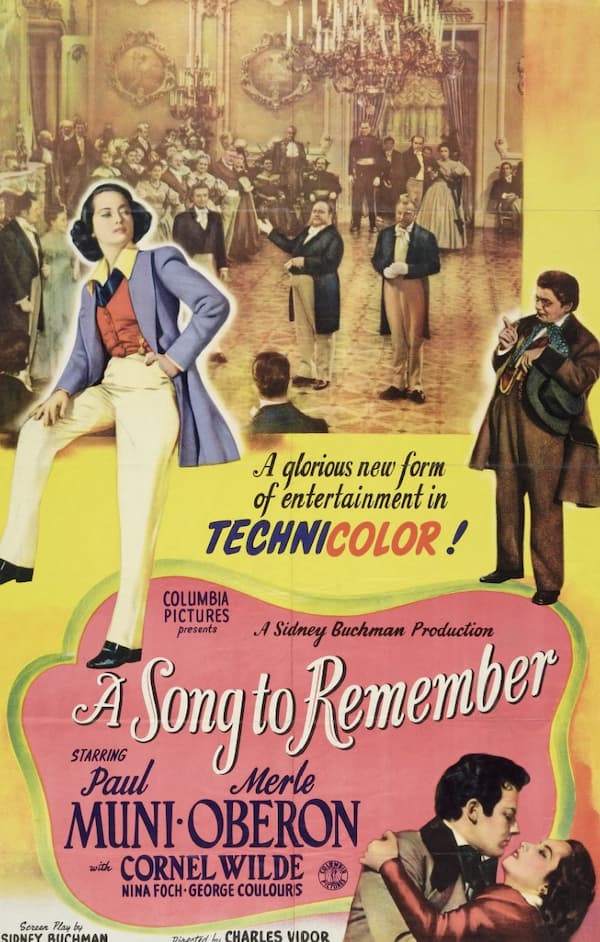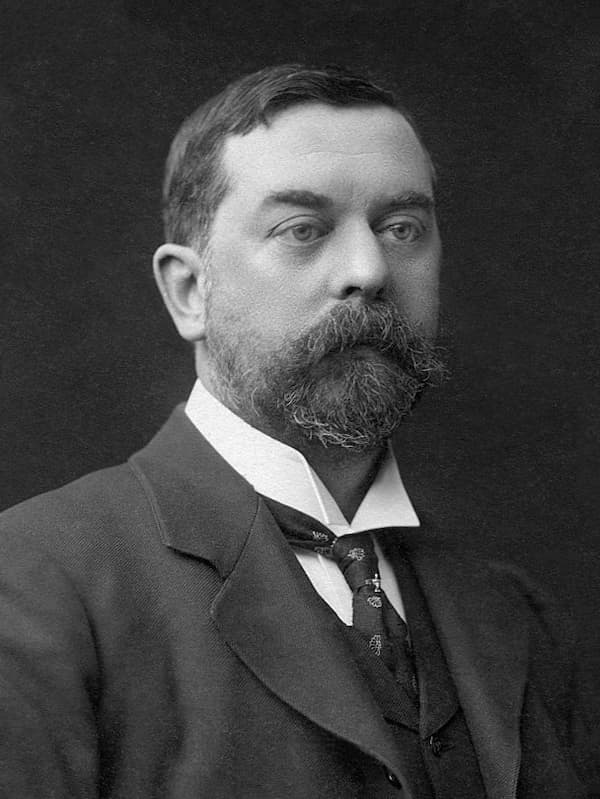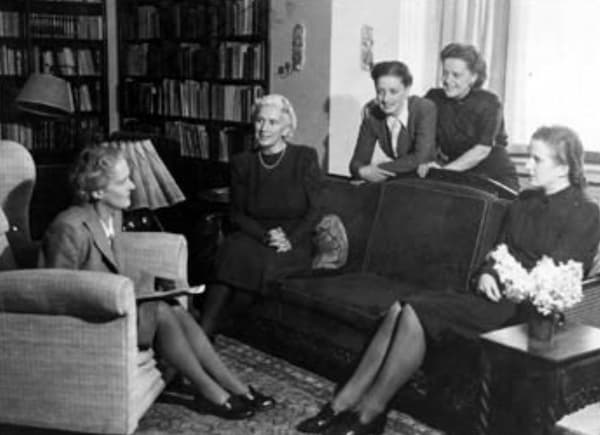At some point in your life, if you are interested in music at all, you will have heard a tune or two by George Gershwin (1898-1937). What an absolutely unique composer freely mixing and combining classical and popular music styles. He is truly one of the most important and appealing American composers of the 20th century.

George Gershwin as a young kid
Another musical giant of the 20th century is the pianist Earl Wild (1915-2010). His name might not be all that familiar, but he was one of the last of the great Romantic pianists in a long line of great virtuoso pianists/composers. In fact, he was called a super virtuoso. He was the first pianist to perform a recital on U.S. television in 1939 and the first to stream a performance over the internet in 1997.
Earl Wild: 7 Virtuoso Etudes after Gershwin, “I’ve got Rhythm”
There was no doubt from the very beginning that Wild was musically special. He started piano lessons with Selmar Janson at the Carnegie Institute of Technology at the age of 3, and later with Marguerite Long and Egon Petri.
Wild had immensely large hands, absolute pitch, a graceful stage presence, and an uncanny facility as a sight-reader and improviser. Already as a teenager, Wild started to produce devilish difficult transcriptions of romantic music.
Earl Wild: 7 Virtuoso Etudes after Gershwin, “The Man I Love” (Xiayin Wang, piano)

The young Earl Wild
Every great virtuoso Romantic pianist was a master of composing piano transcriptions, just think of Franz Liszt. Earl Wild is a direct descendant of that golden age of piano transcriptions, and he was called “the finest transcriber of our time.” And it is not surprising that Wild would turn his attention to the music of George Gershwin.
Gershwin’s songs are miniature masterpieces, full of enduring charm, melodic appeal, and twinkling wit. Earl Wild’s arrangements are an affectionate tribute from one American virtuoso to another. As Wild writes, “Out of respect for Gershwin’s original notation, I have not changed one rhythmic value of the melodies in my transcriptions of the Seven Virtuoso Études.”
Earl Wild: 7 Virtuoso Etudes after Gershwin, “Fascinatin’ Rhythm” (John Wilson, piano)
Wild started work on his virtuoso Gershwin etudes in the late 1950s, but he revised the set and added another song in 1976. They are all based on some of Gershwin’s most popular songs and are strictly treated as études or studies. And this kind of treatment is closely associated with the Chopin’s Études to highlight some particular technical difficulty.
Already, the Chopin etudes go far beyond mere technical exercises, and the same is true of Wild’s handling of the seven Gershwin songs as they transcend any mere technical achievement. That does not mean that the virtuosic demands are out of this world, as they address almost every piano technique known to the best players. However, once the focus falls on the music, they are delicious pieces to savour.
Earl Wild: 7 Virtuoso Etudes after Gershwin, “Liza”
It has been said that Earl Wild managed to pack more notes per square inch than anyone else to produce etudes of obscene difficulty. Once you have all the notes down, however, how do you not make it sound too square and too classical? The solution to that problem is given by Wild’s arrangements.
They are not mere literal translations of Gershwin’s song but use the original melodies simply as a springboard for something far more elaborate and interesting. Wild always colours the tunes with exotic harmonies and complex counterpoint. The combination of Gershwin’s tunes and Wild’s harmonies and lines is a winning combination.
Earl Wild: 7 Virtuoso Etudes after Gershwin, “Someone Loves me” (Martin Jones, piano)

Earl Wild, 1978
Earl Wild loves highly complex textures, and you frequently can hear multiple tempos at the same time. And we also find delicious and difficult polyrhythms with an added touch of jazz. Wild also focuses on demanding scales and arpeggios, but they never really interfere with the melodic interest.
One of my personal favourites is “Fascinatin’ Rhythm,” where staccato playing, scales in thirds, and unbelievable syncopation make for a truly breath-taking musical experience. And just listen to the contrast offered by “Somebody loves me,” with dreamy legato passages evoking a colourful and wistful mood.
Earl Wild: 7 Virtuoso Etudes after Gershwin, “Oh, Lady Be Good” (Igor Lovchinsky, piano)
The real showpiece of the set is probably “Liza.” There is so much going on technically in the right, and the left hand, but the melody is somehow able to shine through. “Lady be Good” really expands the texture, and at the same time sounds an expressive and rhythmic tone.
It is marked by a thoughtful atmosphere with instinctual tones and is strongly influenced by jazz rhythms.
And you just have to love “I Got Rhythm,” that cheerful polytonal dance featuring polyrhythms and jazz style. Listening to the Wild arrangements of Gershwin’s songs is almost like watching a magic show. The eyes are simply too slow to catch the “sleight of hand” on the keyboard, but the ear is certainly enchanted by this pianistic meeting between Gershwin and Wild, possibly filtered through the pianism of Rachmaninoff.
Earl Wild: 7 Virtuoso Etudes after Gershwin, “Embraceable You”
I already told you that Earl Wild was a legendary improviser. It follows to reason that his virtuoso etudes after Gershwin also had their basis in improvisation. In 1990, Wild once more engaged with Gershwin, but this time with a titled “Improvisation” on the famous Gershwin tune “Someone to Watch over Me.”

Someone to Watch Over Me
The song comes from the musical comedy “Oh, Kay” with lyrics by Ira Gershwin. “Someone to Watch over Me,” according to Gershwin is “a fast and jazzy up-tempo rhythm tune.” Originally it was sung on Broadway by Gertrude Lawrence while holding a rag doll, but in the 1930s and 1940s, the tune was recorded as a slow ballad, which eventually became standard.
Earl Wild: Improvisation in the form of a Theme and Variations on Gershwin’s “Someone to watch over me” (Theme) (Earl Wild, piano)
In Wild’s exploration of the song, he once again combines his pianistic genius with his great understanding of music. He manages to put a classical stamp on the work without actually damaging its popular imprint. Initially, Wild presents a clear statement of the song theme, but he quickly adds the most delicious variations. Just listen to the added counter-melodies, the complex rhythmic pattern, and those wonderful harmonic changes.
As we already heard in the etudes, the theme is lovingly handled, but it never really gets lost. The first variation, so to speak, takes us into the world of the Venetian gondoliers and the famous 6/8 metre of the “Barcarole.” That particular song had already been taken up by Chopin and Brahms, and Wild’s colourful evocation included dazzling trills and repeated notes.
Earl Wild: Improvisation in the form of a Theme and Variations on Gershwin’s “Someone to watch over me” (Barcarole) (Earl Wild, piano)

Earl Wild
Wild presents the theme in rapid repeated notes, in what he describes as an imitation of a mandolin. Performers have pointed out that this passage would, in fact, be much easier on a mandolin, where this effect is created by a simple strumming technique. This strumming goes on for more than two pages, and you might also hear a bit of “O Sole Mio” in counterpoint against the Gershwin tune.
We find more clever surprises in the second variation entitled “Brazilian Dance.” There is much lively staccato playing to underscore the virtuosity of this movement, but Wild also presents a lyrical interlude to offer some fine harmonic colours to the prevailing lively Latin rhythms.
Earl Wild: Improvisation in the form of a Theme and Variations on Gershwin’s “Someone to watch over me” (Brazilian Dance) (Earl Wild, piano)
As for the surprises, did you hear the quotations from J.S. Bach’s Partita in C minor and the C minor Fugue from Book 1 of the Well-Tempered Clavier? The Bach references are very cleverly used in counterpoint with Gershwin’s tune. And, they also reappear in the concluding “Tango”
Wild takes us to Argentina, the birthplace of that dance. Set against the sultry pulse of the tango, this movement sounds as the brilliant conclusion of Wild’s exploration of the Gershwin tune. Just gets to show that the world of serious classical music, American popular song and South-American dance can happily sound together.
For more of the best in classical music, sign up for our E-Newsletter
Earl Wild: Improvisation in the form of a Theme and Variations on Gershwin’s “Someone to watch over me” (Tango) (Earl Wild, piano)




